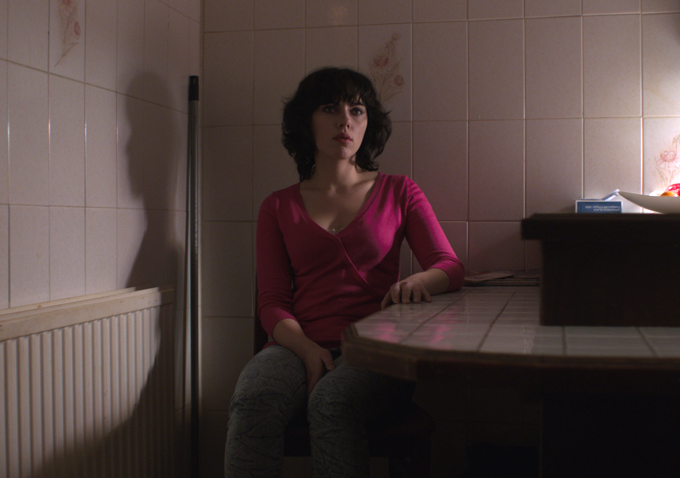When a nude Scarlett Johansson starts undressing another woman, it should be titillating and exciting. In the context of “Under the Skin,” the nudity is void of any emotion.
Directed by Jonathan Glazer, “Under the Skin” offers none of the guarantees of normal Hollywood films, but it’s still worth experiencing. Experiencing, rather than watching, is the key word here. The film is like a dense novel with erudite diction, unfamiliar phrasing and many ambiguities, but with no SparkNotes to use afterwards. There are definitely art-house filmmaking techniques at points, but most of the film is made in a classical style that can be easily digested by most viewers.
A seven-year project, “Under the Skin” is adapted from the novel of the same name by Michael Faber, though the film differs from the novel except for the initial premise.
The movie begins in an abstract manner. A tiny light begins to grow. There are lens flares coming off of the light, slowly taking shape and forming concentric circles, which then become an eyeball. Through all this is the screeching, discordant sound of strings. Eventually, a woman’s voice practicing phonetics is audible through the noise. This is the first 15 minutes of the film, which might make some audiences uncomfortable due to the lack of dialogue.
The film then switches to a recognizable locale — Scotland. A man on a motorcycle pulls up to pick up a dead prostitute’s body. An alien, in the form of a wigged Johansson, strips the clothes off the woman to wear, goes to a department store for a different getup and then drives around Scotland in a white minivan.
A cycle then begins. Johansson lures desperate and single men into the van and takes them back to her modest house. In the modest house, the film abruptly jumps to a blackened space where Johansson walks backwards undressing as the men sink step by step into an aqueous floor. After this, Johansson goes out and prowls for her next prey.
The purpose of this repeating cycle is unclear. The film is without exposition in the form of dialogue or title cards. But the impressive part is that while it isn’t exactly obvious what is happening, there is a clear logic to her actions. “Under the Skin” is like a normal Hollywood production film, just with 90 percent of the dialogue taken out. Everything that is happening would be understood if there was a scene of exposition at the beginning of the film.
Glazer’s greatness is that he forgoes this, allowing personal interpretation of his art. Whether audiences realize it or not, they are always projecting a part of themselves onto the film. The plot and themes are up for interpretation for each individual. Undoubtedly, each viewer will ascribe a slightly different explanation to this film. To be fair, while most art-house films have the loosest of scene connections, there is a story to “Under the Skin.” It is just a story told more predominantly through a visual medium than one with dialogue.
There’s a great scene where Johansson watches idly as a family at a beach drowns one by one, leaving a baby unattended on the seashore. She shines as a blank, mostly dispassionate, slate throughout the film — an alien experiencing human life for the first time. She does a lot with little dialogue. In a completely different way than expected, she gives a seductive performance.
The sound design by Johnnie Burn and music by composer Mica Levi is quite unlike other films. It flows in and out of being hypnotic, off-putting and disconcerting. The sound mirrors the ambiguity of Glazer’s script and Daniel Landin’s cinematography.
The experience with this film will depend entirely on how much effort is put into it by the viewer. “Under the Skin” can be a great film about the human experience, male-female relationships, the power of sexuality and the desperate nature of men. On the other hand, this film could be a perplexing 108 minutes with awkward male and female nudity.
The level of dramatic, emotional or thematic substance in this film depends on the studious reading into the seemingly disparate elements in the film. However, this film should be seen. Art is meant to be analyzed and discussed with others. Glazer shoots for the moon where other films are satisfied with repeating the same stories in the same manner over and over again.
While most art-house films are unintelligible to most filmgoers, this one is more palatable with Johansson carrying it and interrelating events that can be followed. There’s no guarantee of satisfaction. On the other hand, Glazer’s film leaves an unforgettable impression.







